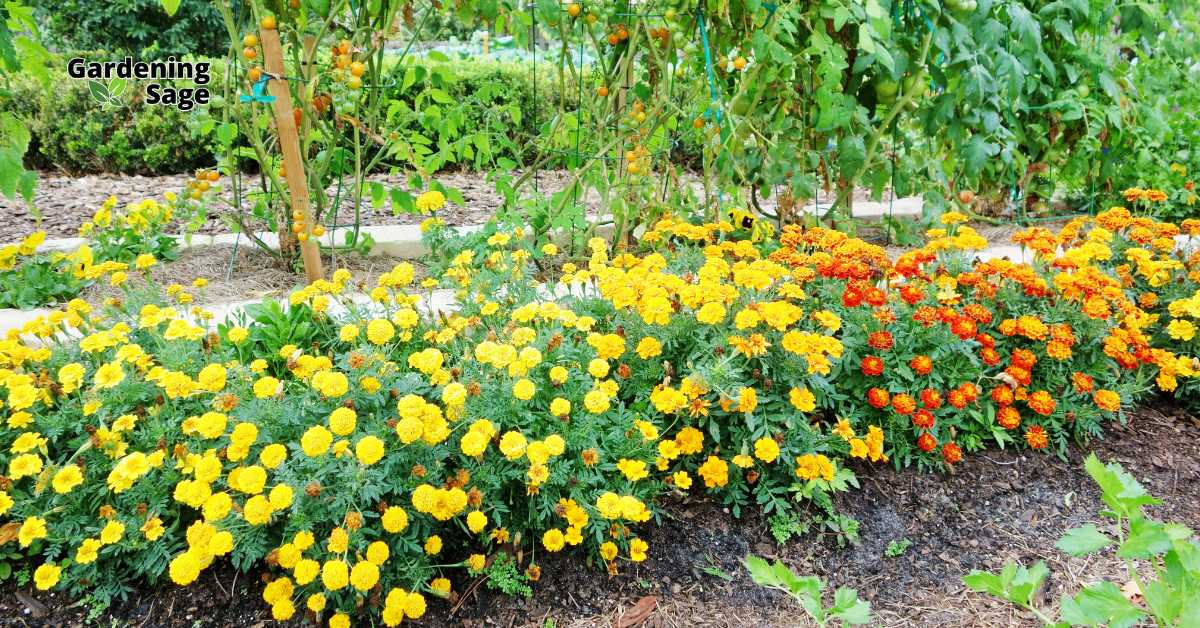Embark on a journey to transform your garden into a symphony of collaborative growth with the magic of companion planting. This ancient practice, steeped in agricultural wisdom, unites different plants to enhance growth, deter pests, and create a harmonious ecosystem.
In this guide, we explore the secrets and benefits of companion planting, helping you make informed decisions to cultivate a thriving, productive garden.
Understanding Companion Planting
Companion planting is more than just placing plants side by side; it’s about creating beneficial relationships in the garden. This technique involves strategically pairing plants to take advantage of natural synergies.
Some plants, for example, can repel pests naturally, offering protection to their neighbors. Others share nutrients or attract beneficial insects, enhancing overall garden health.
The Science Behind Companion Planting
The effectiveness of companion planting is rooted in ecological science. Certain plants release chemicals that can either attract beneficial insects or repel harmful ones, acting as natural pest control.
Others can improve soil composition or provide physical support. Understanding these interactions is key to a successful companion planting strategy.
Benefits of Companion Planting
Companion planting offers a multitude of benefits:
- Natural Pest Control: Some combinations naturally deter pests, reducing the need for harmful pesticides.
- Improved Pollination: Certain plant pairings attract pollinators, increasing the likelihood of successful fruit and vegetable production.
- Better Use of Space: Companion planting can maximize garden space, allowing for a more abundant harvest.
- Enhanced Plant Health: The right plant combinations can lead to healthier, more vigorous plants.
- Increased Biodiversity: Introducing a variety of plants encourages a more diverse ecosystem, promoting overall garden health.
Popular Companion Planting Combinations
Some well-known and effective companion planting pairs include:
- Tomatoes and Marigolds: Marigolds repel nematodes and other pests that could harm tomatoes.
- Lettuce and Tall Flowers: Tall flowering plants provide shade for lettuce, which thrives in cooler temperatures.
- Spinach and Strawberries: Spinach can provide ground cover, reducing weeds that might compete with strawberries.
- Cabbage and Dill: Dill attracts beneficial insects that help control pests affecting cabbage.
Selecting the Right Companions for Your Garden
Choosing the right companions involves understanding your plants’ needs and behaviors:

- Consider Growth Patterns: Pair plants with similar light, water, and soil needs, but different growth habits, to maximize space.
- Observe Plant Interactions: Pay attention to how plants affect each other and adjust your pairings accordingly.
- Local Adaptations: Choose plants and pairings that are well-suited to your local climate and conditions.
Implementing Companion Planting in Your Garden
To successfully implement companion planting:
- Start Small: Begin with a few pairings and expand as you learn what works.
- Keep Records: Document what pairings work well and which ones don’t for future reference.
- Stay Flexible: Be prepared to adjust your plant combinations based on observations and results.
Grow Together, Thrive Together
Companion planting is a dynamic and rewarding approach to gardening. It fosters a mutually beneficial environment for plants, leading to a healthier, more productive garden.
Embrace this ancient wisdom and watch as your garden becomes a testament to the power of cooperation in nature.














